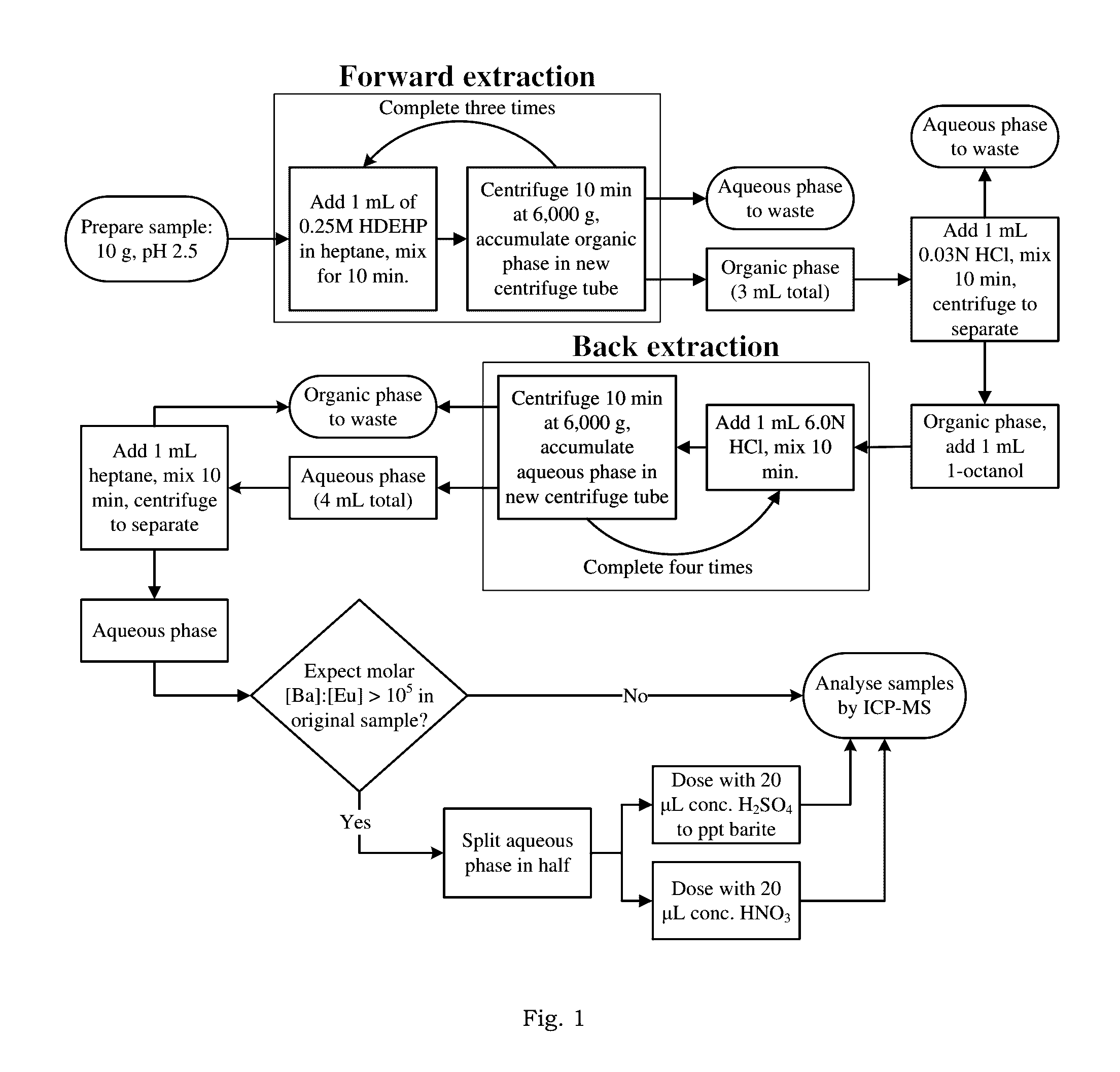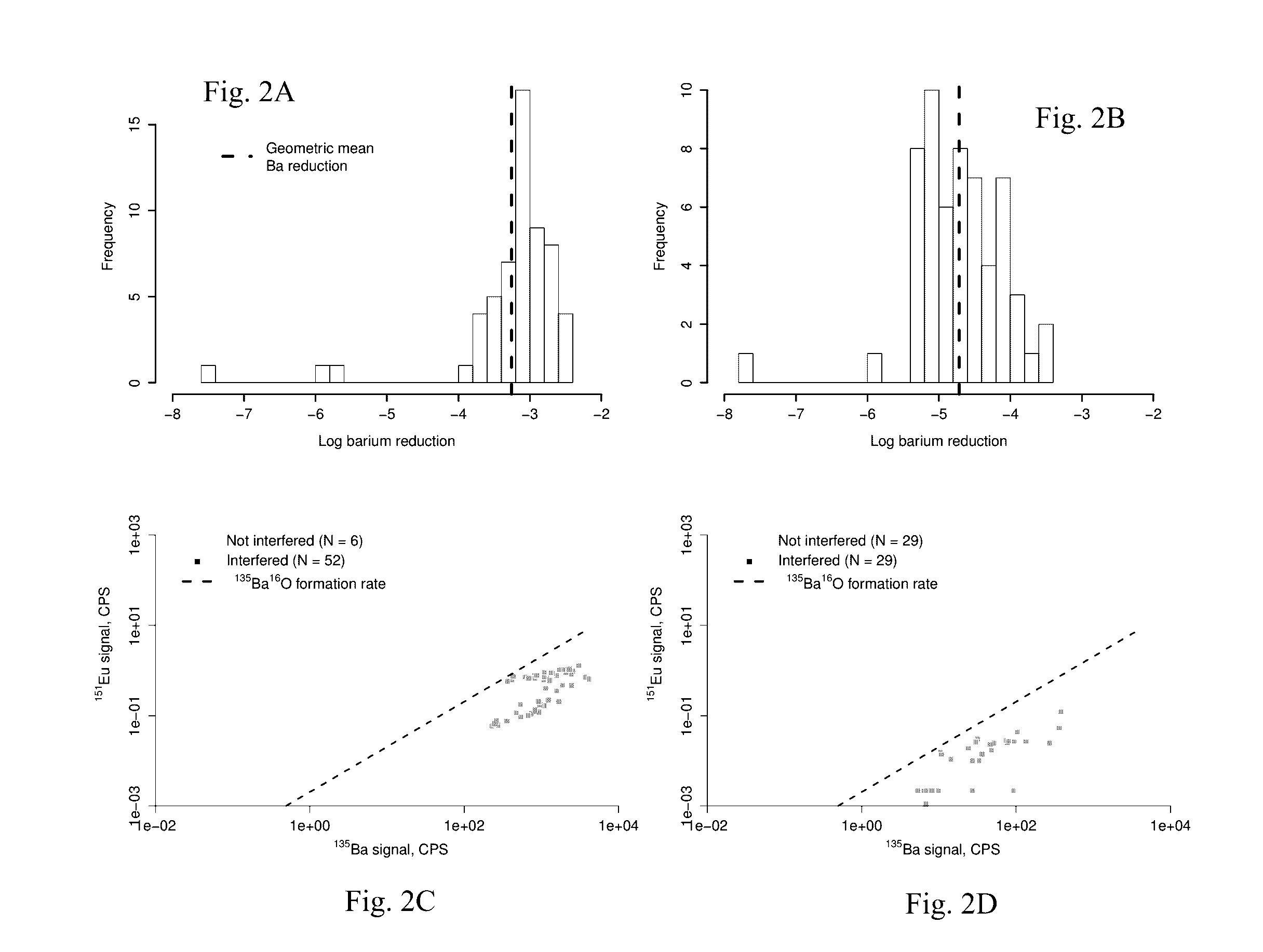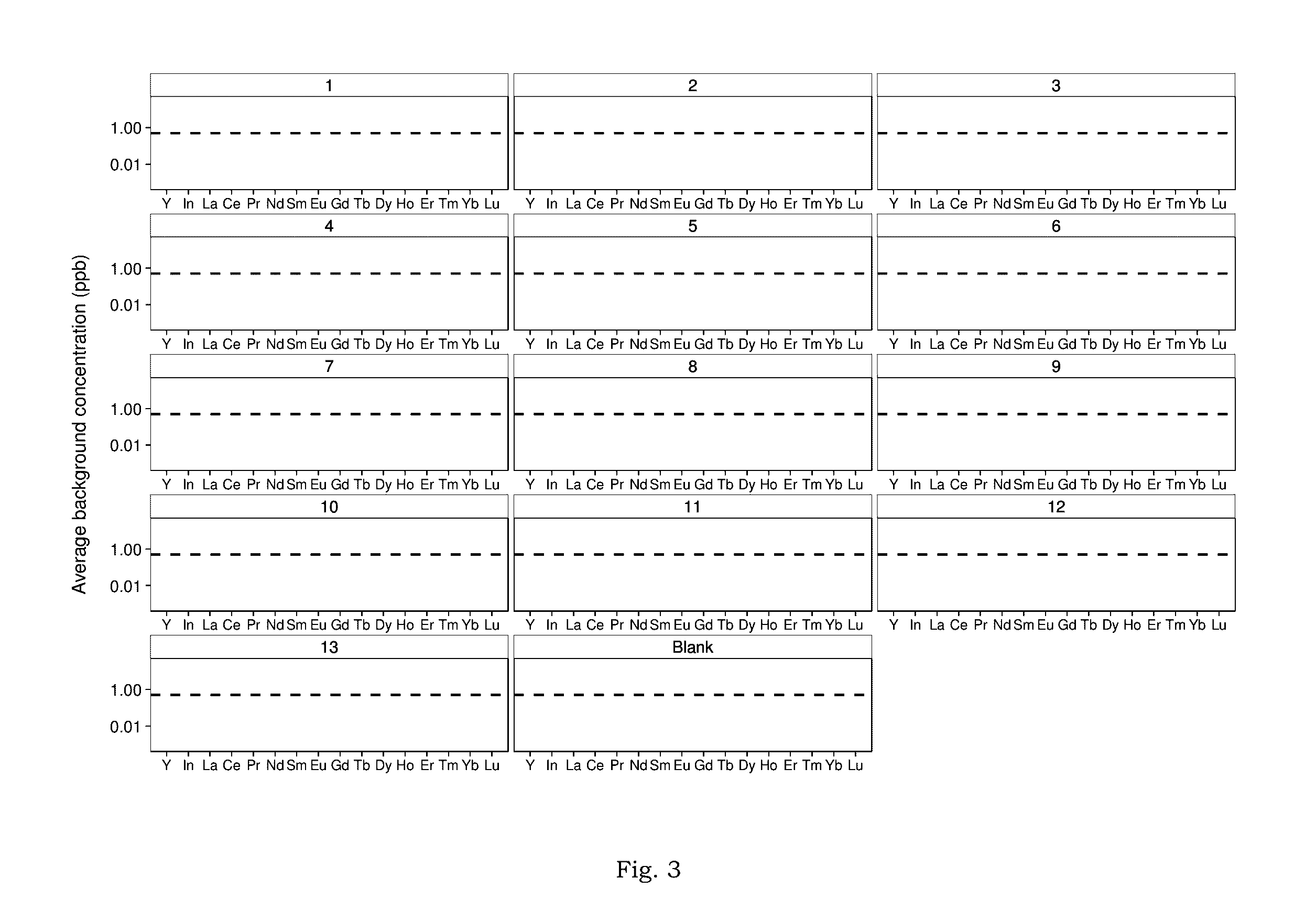Recovery of Rare Earth Elements by Liquid-Liquid Extraction from Fresh Water to Hypersaline Solutions
a technology of rare earth elements and liquid-liquid extraction, which is applied in the field of rare earth metal recovery, can solve the problems of significant environmental burden, high cost of mining, and difficulty in precise quantification of ree in complex matrices like brines, and achieves improved separation efficiency, reduced environmental burden, and reduced cost
- Summary
- Abstract
- Description
- Claims
- Application Information
AI Technical Summary
Benefits of technology
Problems solved by technology
Method used
Image
Examples
Embodiment Construction
[0024]Complex, hypersaline brines—including those co-produced with oil and gas, rejected from desalination technologies, or used as working fluids for geothermal electricity generation—could contain critical materials such as the rare earth elements (REE) in recoverable concentrations. Analysis of these critical materials in complex, aqueous matrices is necessary for evaluation and implementation of systems aimed at recovering those materials. However, most analytical methods for measuring trace metals have not been validated for highly saline and / or chemically complex brines.
[0025]According to one embodiment, the method of the present invention modifies and optimizes a liquid-liquid extraction (LLE) technique, using bis(2-ethylhexyl) phosphate as the extractant in a heptane diluent. Moreover, with proper characterization of the natural samples of interest, the method can be deployed for accurate analysis of REE in hyper-saline and chemically complex brines.
[0026]In one example embo...
PUM
| Property | Measurement | Unit |
|---|---|---|
| ionic strength | aaaaa | aaaaa |
| ionic strength | aaaaa | aaaaa |
| ionic strength | aaaaa | aaaaa |
Abstract
Description
Claims
Application Information
 Login to View More
Login to View More - R&D
- Intellectual Property
- Life Sciences
- Materials
- Tech Scout
- Unparalleled Data Quality
- Higher Quality Content
- 60% Fewer Hallucinations
Browse by: Latest US Patents, China's latest patents, Technical Efficacy Thesaurus, Application Domain, Technology Topic, Popular Technical Reports.
© 2025 PatSnap. All rights reserved.Legal|Privacy policy|Modern Slavery Act Transparency Statement|Sitemap|About US| Contact US: help@patsnap.com



